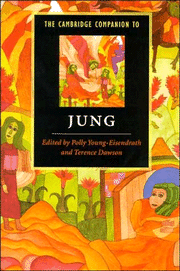Book contents
- Frontmatter
- Introduction
- Part 1 Jung's ideas and their context
- Part 2 Analytical psychology in practice
- 5 The classical Jungian school
- 6 The archetypal school
- 7 The developmental school
- 8 Transference and countertransference
- 9 Me and my anima
- 10 The case of Joan
- Part 3 Analytical psychology in society
- Glossary
- Index
- References
7 - The developmental school
from Part 2 - Analytical psychology in practice
Published online by Cambridge University Press: 28 May 2006
- Frontmatter
- Introduction
- Part 1 Jung's ideas and their context
- Part 2 Analytical psychology in practice
- 5 The classical Jungian school
- 6 The archetypal school
- 7 The developmental school
- 8 Transference and countertransference
- 9 Me and my anima
- 10 The case of Joan
- Part 3 Analytical psychology in society
- Glossary
- Index
- References
Summary
Introduction
Analytical psychology as elaborated by Jung and his immediate followers did not focus on the depth psychological aspects of early infant and childhood development. Neither was there much attention paid to the usefulness of understanding the varieties of relationship that can occur in the consulting room between patient and analyst. Moreover, whilst Freud and his followers began to make the imaginative leap required to link both areas of investigation - the early stages of development and states of mind on the one hand, and the nature of transference and countertransference on the other - and to include them in psychoanalytic theory, analytical psychology was slow to follow suit despite Jung's early and continued insistence on the importance of the relationship between analyst and patient (for example, CW 16).
These areas of analytic research were not a prime attraction for Jung or the group that had formed around him, who were much more taken up by the rich and attractive field of creative and symbolic activity and collective and cultural pursuits. Nevertheless, in certain respects it could be said that the sources of such activity could be located within exactly these areas, and could be seen rightfully to belong to the examination of the relationship between primary process (that is, the earlier, more primitive mental processes with infantile foundations) and the later secondary mental processes.
- Type
- Chapter
- Information
- The Cambridge Companion to Jung , pp. 119 - 140Publisher: Cambridge University PressPrint publication year: 1997
References
- 1
- Cited by



